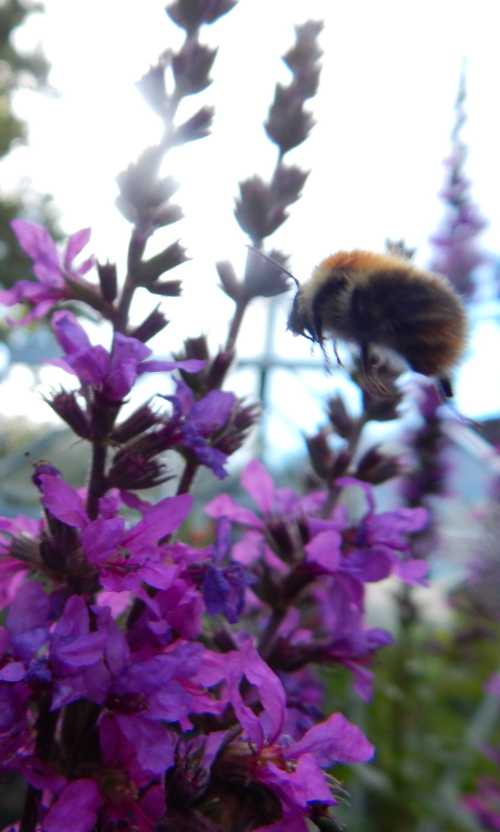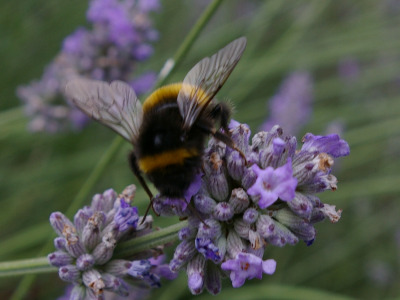Do Bumble Bees Bite?
Everyone knows that bumble bees (unless they are male) can sting, but given that bees have mandibles (jaws) do bumble bees bite?
Don't worry, bumble bees don't bite humans!
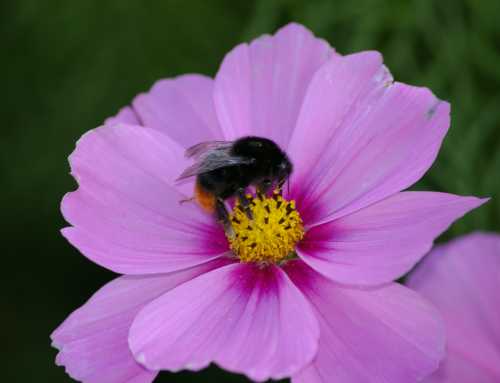 Red-tailed bumble bee foraging on Cosmos flower
Red-tailed bumble bee foraging on Cosmos flower
If you ever find yourself handling a bumble bee, it will not bite you. However, despite being mostly docile, if they feel threatened or if you handle them roughly, they could possibly sting you in self defense. I always encourage people to let the bees be, so that they can go about their foraging in peace.
That said, bees do have jaws, and they put them so use on various important tasks.
Some time ago, I wrote a page: do bees have teeth? It features an image showing the mandibles of a bee - actually the image below is a Megachile bee species - leafcutters and mud bees.
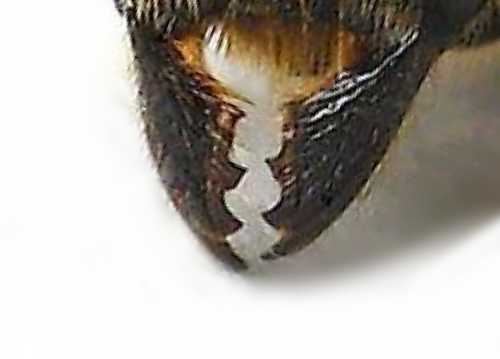
The leafcutters of this species are famous for using their jaws to bite off pieces of leaf or petal with which to construct their nests.
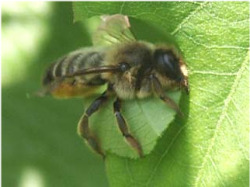
Likewise, Carpenter bee species have mandibles that can chew into wood.
Bumble bees are pretty docile. Whilst they also have a use for their jaws (mandibles), they are not used for biting humans, and are unlikely to be strong enough anyway. But bumble bees will use their jaws to bite in specific circumstances.
When do bumble bees bite? -
4 ways bumble bees use their mandibles
1. Nectar robbing
All bumble bees fall within the 'long-tongued' category, yet some species have longer tongues than others.
Nectar robbing is especially common among the shorter-tongued bumble bee species, such as the buff-tailed bumble bee, white-tailed bumble bee, Bombus lucorum and the Bombus terrestris.
When the shape of a flower makes it difficult for the bee to reach the nectaries inside, a bumble bee will bite a hole into the base of the flower so that they can easily reach the nectar stores by sticking their tongues through the hole.
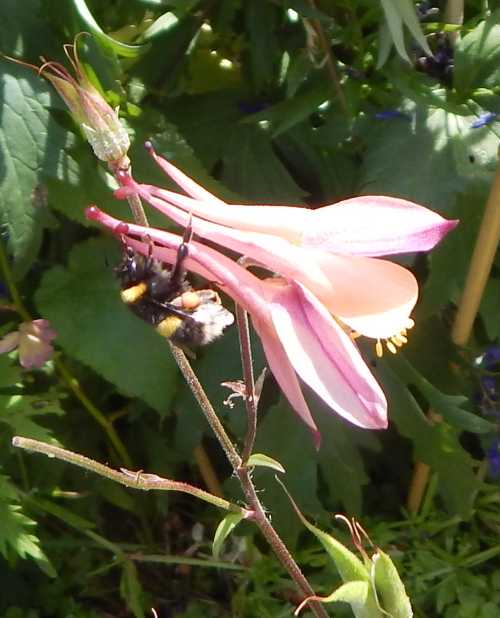 A white-tailed bumble bee nectar robbing Acquilegia flower.
A white-tailed bumble bee nectar robbing Acquilegia flower.
2. Encouraging plants to flower
Remarkably, scientists have discovered that when pollen is scarce, bumble bees will bite the leaves of plants. This action appeared to stimulate the plant to produce flowers - typically 30 days (a month earlier) than plants that were not bitten by the bumble bees!
3. Buzz pollination
Buzz pollination is a process of using vibration to loosen the pollen from the anthers of a flower.
Bumble bees are well known to be useful in the commercial pollination of tomato plants, where buzz pollination is necessary, but there are many other flowers that are buzz pollinated by bumble bees (and indeed, other types of bee).
During buzz pollination, usually the bumble bee will bite the anthers of the flower while vibrating, thorax, abdomen, and to a lesser extent the legs.
4. Biting their way out of cocoons
Young bumble bees learn to use their mandibles straight away!
As with all bee life cycles, bumble bees develop through the phase of egg, larva, pupa which takes place in a cocoon, and then finally a young adult which bites its way out of the cocoon ready to take an active role in the colony.
Summary
Bumble bees do not use their mandibles (jaws) to bite humans, but they do use them to perform important functions, in particular to help them during the task of foraging, and also to escape from the cocoon as newly emerged, young adult bumble bees.
Resources
- Pashalidou F, Lambert H, Peybernes T, Mescher M, De Moraes C, Bumble bees damage plant leaves and accelerate flower production when pollen is scarce. Published 22 May 2020, Science 368, 881 (2020) DOI: 10.1126/science.aay0496
- T. Benton, Bumblebees: The Natural History and Identification of the Species Found in Britain, vol. 98 of Collins New Naturalist Library (Harper UK, 2006).
- D. Goulson, Bumblebee Behaviour And Ecology.
If you found this page helpful or interesting, I'd really be grateful if you would share it with others - if not this page, perhaps another, such as Gardening For Bees.
Thank you so much :) .
